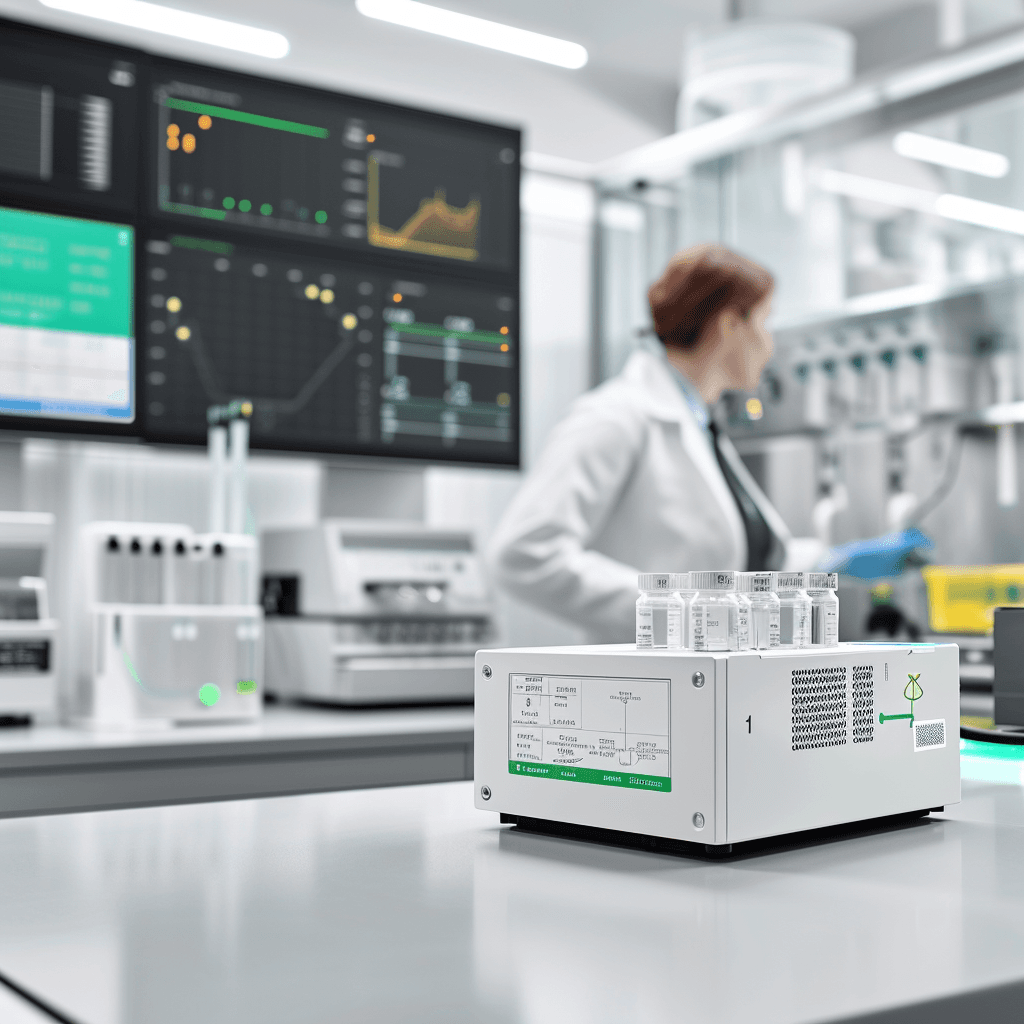
Superior ATP Performance
We lead in ATP hygiene monitoring with systems proven for accuracy and consistency, featuring advanced, precise ATP detection technology and eco-friendly, efficient Snap-Valve™ design. Discover how our solutions enhance hygiene monitoring practices.
Linearity
The linearity graph shows a direct, proportional, straight-line relationship between RLU and ATP for the Hygiena system. The closer to linear a system can get, the more precise and reliable the results will be. Systems that deviate from linear offer less reliable results and less sensitivity.
As this graph shows, the Hygiena system is among the most linear on the market.
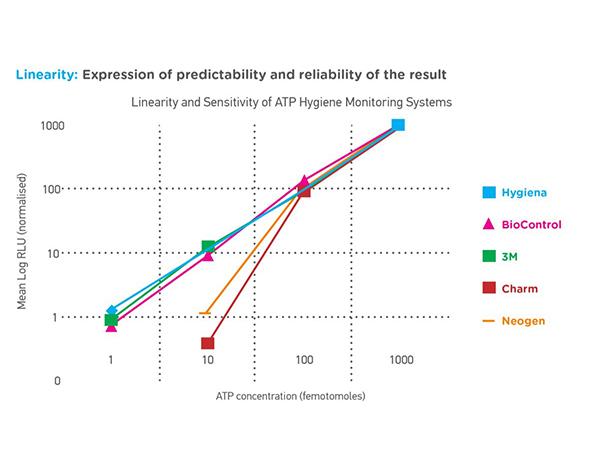
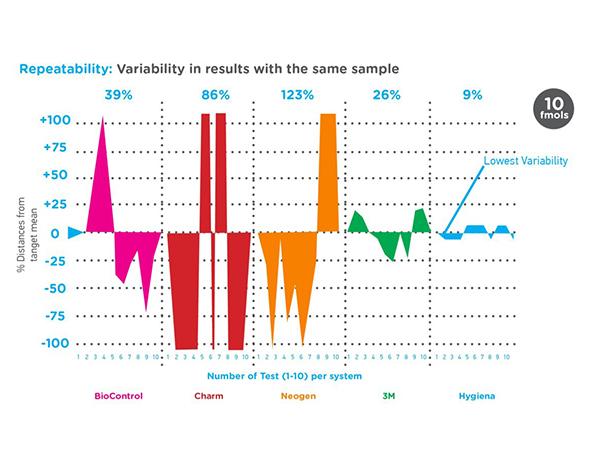
Repeatability
Repeatability is described by Coefficient of Variation (CV). The higher the CV, the greater the variability between each result with the same sample. More variability means the results are more inconsistent and unreliable. The graph shows that Hygiena systems consistently deliver dependable results with the lowest CV.
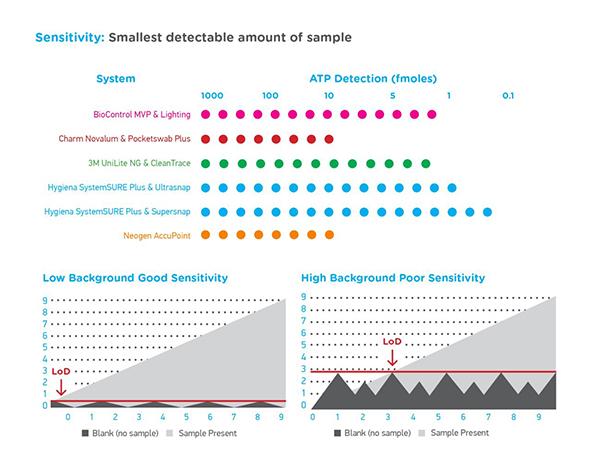
Sensitivity
Sensitivity is defined as the Limit of Detection (LoD). It is the smallest amount of ATP detectable above the background noise of the system. Background noise is the RLU detected by the system in the absence of ATP. Background noise may come from both the instrument (as electrical interference), and the reagent swab device (as chemical interference). Hygiena systems detect the lowest levels of ATP.
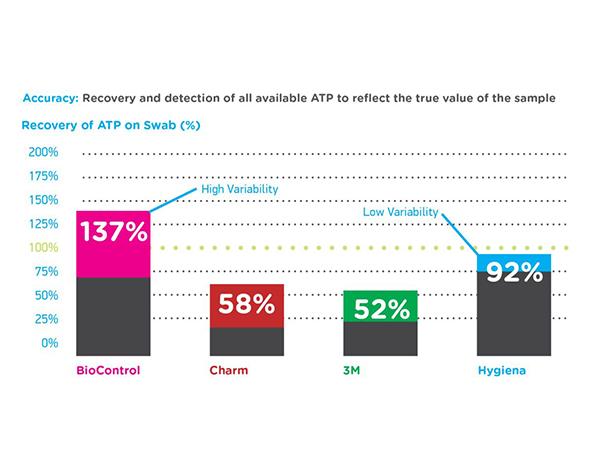
Accuracy
To test accuracy, 100 fmoles of ATP was added to each test device and measurements were taken (using 10 replicates) to determine how much of the available sample was actually detected. Results less than 100% indicate that only part of the sample was detected due to some interference within the system. Results over 100% indicate extra signal coming from the test device. Hygiena’s system is the closest to 100%, thus the least variable.
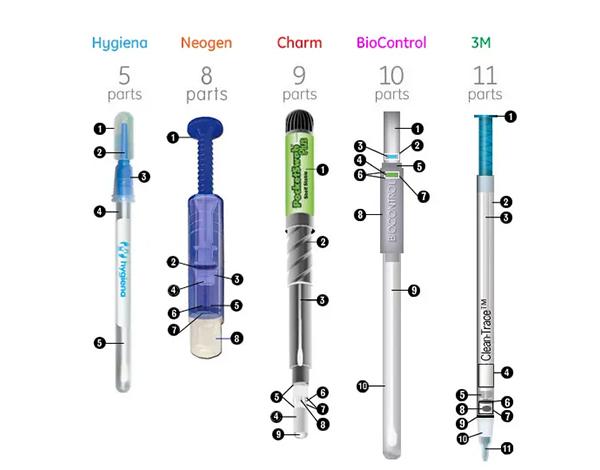
Superior Design
Hygiena’s manufacturing expertise and patented Snap-Valve™ design keeps costs low. The illustration to the right show the number of components in each device.
Hygiena’s test devices are made of less components than any other device. Fewer elements in the device means less room for error from manufacturing variance and less raw material costs.
Our patented Snap-Valve™ technology eliminates the need for additional compartments that require foil seals. Other test devices require the swab bud to puncture through several foil seals in order to activate the device. This leaves sample behind on the foil and reduces accuracy of the reading, resulting in lower or variable ATP readings.
By keeping our test design simple, we are able to reduce costs, limit variability, and provide a superior product.
Environmentally Friendly
Hygiena test devices use up to 50% less plastic than other ATP tests and are 100% recyclable.
Clean-Trace is a registered trademark of 3M Company; NovaLUM and PocketSwab are registered trademarks of Charm Sciences, Inc.; Accupoint is a registered trademark of Neogen Corporation; Lightning MVP is a registered trademark of BioControl Systems, Inc.